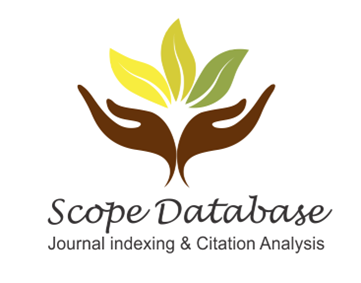EL PAPEL DE LA COMPETENCIA DIGITAL EN LA MONITORIZACIÓN DE SALUD IMPULSADA POR IA PARA PERSONAS MAYORES: UN ESTUDIO CUANTITATIVO SOBRE LA EFECTIVIDAD DEL SISTEMA
Digital Competency in Elderly Health Monitoring
DOI:
https://doi.org/10.71328/jht.v6i1.64Palabras clave:
Monitoreo Remoto Basado en IA, Cuidado de Ancianos, Datos de Salud en Tiempo Real, Recomendaciones Personalizadas, Alfabetización DigitalResumen
Este estudio analiza cómo el procesamiento en tiempo real de datos de salud y las recomendaciones personalizadas basadas en IA influyen en la efectividad de los sistemas de monitoreo remoto para personas mayores. También examina el papel de la alfabetización digital como variable moderadora entre la recolección de datos y la efectividad del sistema. Se utilizó un enfoque cuantitativo, con una encuesta en línea aplicada a 385 participantes, incluidos adultos mayores, cuidadores y profesionales de la salud. Las respuestas se midieron en una escala Likert de 5 puntos, y la muestra fue seleccionada mediante muestreo estratificado intencional para asegurar diversidad. La confiabilidad y validez se evaluaron con el alfa de Cronbach, análisis factorial exploratorio y regresión lineal múltiple. Los resultados muestran que tanto el procesamiento de datos como las recomendaciones personalizadas mejoran significativamente la efectividad del sistema. En particular, la alfabetización digital refuerza el impacto positivo del procesamiento de datos en el desempeño del sistema, destacando la importancia de las habilidades del usuario. El estudio aplica teorías como Cognitive Fit, Selectividad Socioemocional y Brecha Digital, y ofrece recomendaciones útiles para desarrolladores, profesionales de la salud y responsables de políticas. Destaca la importancia de diseñar tecnologías accesibles y centradas en el usuario.
Descargas
Citas
Ahmed, S., Irfan, S., Kiran, N., Masood, N., Anjum, N., & Ramzan, N. (2023). Remote Health Monitoring Systems for Elderly People: A Survey. Sensors, 23(16), 7095. https://doi.org/10.3390/s23167095 DOI: https://doi.org/10.3390/s23167095
Alexandru, A., Ianculescu, M., & Paraschiv, E. A. (2024). Harnessing the Capabilities of IoHT-Based Remote Monitoring Systems for Decision Making in Elderly Healthcare. In Decision Making and Decision Support in the Information Era: Dedicated to Academician Florin Filip (pp. 147-184). Cham: Springer Nature Switzerland. https://doi.org/10.1007/978-3-031-62158-1_10 DOI: https://doi.org/10.1007/978-3-031-62158-1_10
Babbie, E. (2010). The practice of social research. 12th ed. Belmont, CA: Wadsworth Cengage.
Bandura, A. (1986). Social foundations of thought and action. Englewood Cliffs, NJ, 1986(23-28), 2.
Batool, I. (2025). RealTime Health Monitoring Using 5G Networks: A Deep Learning-Based Architecture for Remote Patient Care. arXiv. https://doi.org/10.48550/arXiv.2501.01027
Brown, Z., Bergman, D., Holt, L., Miller, K., Frownfelter, J., Bleau, H., ... & Ball, T. (2023). Augmenting a transitional care model with artificial intelligence decreased readmissions. Journal of the American Medical Directors Association, 24(7), 958-963. https://doi.org/10.1016/j.jamda.2023.03.005 DOI: https://doi.org/10.1016/j.jamda.2023.03.005
Capan, M., Hoover, S., Miller, K. E., Pal, C., Glasgow, J. M., Jackson, E. V., & Arnold, R. C. (2018). Data-driven approach to early warning score-based alert management. BMJ open quality, 7(3), e000088. https://pubmed.ncbi.nlm.nih.gov/30167470/ DOI: https://doi.org/10.1136/bmjoq-2017-000088
Carstensen, L. L. (1993, January). Motivation for social contact across the life span: A theory of socioemotional selectivity. In Nebraska symposium on motivation (Vol. 40, pp. 209-254).
Castilla, D., Botella, C., Miralles, I., Bretón-López, J., Dragomir-Davis, A. M., Zaragoza, I., & Garcia-Palacios, A. (2018). Teaching digital literacy skills to the elderly using a social network with linear navigation: A case study in a rural area. International Journal of Human-Computer Studies, 118, 24-37. https://doi.org/10.1016/j.ijhcs.2018.05.009 DOI: https://doi.org/10.1016/j.ijhcs.2018.05.009
Charness, N., & Boot, W. R. (2009). Aging and Information Technology Use: Potential and Barriers. Current Directions in Psychological Science, 18(5), 253-258. https://doi.org/10.1111/j.1467-8721.2009.01647.x DOI: https://doi.org/10.1111/j.1467-8721.2009.01647.x
Chen, L., Jia, J., Xiao, M., Wu, C., & Zhang, L. (2024). A study on the influence of digital literacy on elderly user’s intention to identify social media false information. The Electronic Library, 42(5), 701-721. https://doi.org/10.1108/EL-10-2023-0257 DOI: https://doi.org/10.1108/EL-10-2023-0257
Chen, Y. H. J., Lin, C. S., Lin, C., Tsai, D. J., Fang, W. H., Lee, C. C., ... & Chen, S. J. (2023). An AI-enabled dynamic risk stratification for emergency department patients with ECG and CXR integration. Journal of Medical Systems, 47(1), 81. https://doi.org/10.1007/s10916-023-01980-x DOI: https://doi.org/10.1007/s10916-023-01980-x
Chin, J., Payne, B., Gao, X., Conner-Garcia, T., Graumlich, J. F., Murray, M. D., … Stine-Morrow, E. A. L. (2014). Memory and comprehension for health information among older adults: Distinguishing the effects of domain-general and domain-specific knowledge. Memory, 23(4), 577–589. https://doi.org/10.1080/09658211.2014.912331 DOI: https://doi.org/10.1080/09658211.2014.912331
Chow, M., Herold, D. K., Choo, T. M., & Chan, K. (2012). Extending the technology acceptance model to explore the intention to use Second Life for enhancing healthcare education. Computers & education, 59(4), 1136-1144. https://doi.org/10.1016/j.compedu.2012.05.011 DOI: https://doi.org/10.1016/j.compedu.2012.05.011
Coiera, E. (2015). Guide to health informatics. CRC press. DOI: https://doi.org/10.1201/b13617
Creswell, J.W. and Creswell, J.D., (2017). Research design: Qualitative, quantitative, and mixed methods approaches. Sage publications.
Cummings, M. L. (2006). Integrating ethics in design through the value-sensitive design approach. Science and engineering ethics, 12, 701-715. https://doi.org/10.1007/s11948-006-0065-0 DOI: https://doi.org/10.1007/s11948-006-0065-0
Davis, F. D. (1989). Perceived Usefulness, Perceived Ease of Use, and User Acceptance of Information Technology. MIS Quarterly, 13(3), 319–340. https://doi.org/10.2307/249008 DOI: https://doi.org/10.2307/249008
Davis, F. D., Granić, A., & Marangunić, N. (2024). The technology acceptance model: 30 years of TAM. Switzerland: Springer International Publishing AG. DOI: https://doi.org/10.1007/978-3-030-45274-2
Dhar, R., Kumar, A., & Karmakar, S. (2023). Smart wearable devices for real-time health monitoring. Asian Journal of Medical Sciences, 14(12), 1-3. https://doi.org/10.3126/ajms.v14i12.58664 DOI: https://doi.org/10.3126/ajms.v14i12.58664
Evangelista, L. S., Moser, D. K., Lee, J. A., Moore, A. A., Ghasemzadeh, H., Sarrafzadeh, M., & Mangione, C. M. (2015). Examining older adults’ perceptions of usability and acceptability of remote monitoring systems to manage chronic heart failure. Gerontology and geriatric medicine, 1, 2333721415618050. https://doi.org/10.1177/2333721415618050 DOI: https://doi.org/10.1177/2333721415618050
Feng, J., Phillips, R. V., Malenica, I., Bishara, A., Hubbard, A. E., Celi, L. A., & Pirracchio, R. (2022). Clinical artificial intelligence quality improvement: towards continual monitoring and updating of AI algorithms in healthcare. NPJ digital medicine, 5(1), 66. https://doi.org/10.1038/s41746-022-00611-y DOI: https://doi.org/10.1038/s41746-022-00611-y
Fishbein, M., & Ajzen, I. (1977). Belief, attitude, intention, and behavior: An introduction to theory and research.
Fowe, I. E., Sanders, E. C., & Boot, W. R. (2023). Understanding barriers to the collection of mobile and wearable device data to monitor health and cognition in older adults: A scoping review. AMIA Joint Summits on Translational Science Proceedings, 2023, 186–195. https://pubmed.ncbi.nlm.nih.gov/37350920/
Habibi, F., Ghaderkhani, S., Shokoohi, M., Banari, T., Morsali, M., Abadi, R. N. S., & Kiamehr, H. (2025). Harnessing artificial intelligence in Alzheimer's disease management: navigating ethical challenges in AI. AI and Ethics, 1-17. https://doi.org/10.1007/s43681-025-00673-0 DOI: https://doi.org/10.1007/s43681-025-00673-0
Hennebelle, A., Dieng, Q., Ismail, L., & Buyya, R. (2024, December). SmartEdge: Smart Healthcare End-to-End Integrated Edge and Cloud Computing System for Diabetes Prediction Enabled by Ensemble Machine Learning. In 2024 IEEE International Conference on Cloud Computing Technology and Science (CloudCom) (pp. 127-134). IEEE. https://doi.org/10.48550/arXiv.2502.15762 DOI: https://doi.org/10.1109/CloudCom62794.2024.00031
Ho, A. (2020). Are we ready for artificial intelligence health monitoring in elder care?. BMC geriatrics, 20(1), 358. https://doi.org/10.1186/s12877-020-01764-9 DOI: https://doi.org/10.1186/s12877-020-01764-9
Holden, R. J., & Karsh, B. T. (2010). The technology acceptance model: its past and its future in health care. Journal of biomedical informatics, 43(1), 159-172. https://doi.org/10.1016/j.jbi.2009.07.002 DOI: https://doi.org/10.1016/j.jbi.2009.07.002
Hong, S., Xu, Y., Khare, A., Priambada, S., Maher, K., Aljiffry, A., ... & Tumanov, A. (2020, August). Holmes: health online model ensemble serving for deep learning models in intensive care units. In Proceedings of the 26th ACM SIGKDD International Conference on Knowledge Discovery & Data Mining (pp. 1614-1624). https://doi.org/10.48550/arXiv.2008.04063 DOI: https://doi.org/10.1145/3394486.3403212
Iqbal, S. (2023, March). Artificial Intelligence tools and applications for elderly healthcare-review. In Proceedings of the 2023 9th International Conference on Computing and Artificial Intelligence (pp. 394-397). http://dx.doi.org/10.1145/3594315.3594347 DOI: https://doi.org/10.1145/3594315.3594347
Islam, S. R., Kwak, D., Kabir, M. H., Hossain, M., & Kwak, K. S. (2015). The internet of things for health care: a comprehensive survey. IEEE access, 3, 678-708. https://doi.org/10.1109/ACCESS.2015.2437951 DOI: https://doi.org/10.1109/ACCESS.2015.2437951
Jafleh, E. A., Alnaqbi, F. A., Almaeeni, H. A., Faqeeh, S., Alzaabi, M. A., Al Zaman, K., ... & Alzaabi, M. (2024). The role of wearable devices in chronic disease monitoring and patient care: a comprehensive review. Cureus, 16(9). DOI: https://doi.org/10.7759/cureus.68921
Katirai, A. (2023). The ethics of advancing artificial intelligence in healthcare: analyzing ethical considerations for Japan’s innovative AI hospital system. Frontiers in Public Health, 11, 1142062. https://doi.org/10.3389/fpubh.2023.1142062 DOI: https://doi.org/10.3389/fpubh.2023.1142062
King, W. R., & He, J. (2006). A meta-analysis of the technology acceptance model. Information & management, 43(6), 740-755. https://doi.org/10.1016/j.im.2006.05.003 DOI: https://doi.org/10.1016/j.im.2006.05.003
Kirschner, P. A. (2002). Cognitive load theory: Implications of cognitive load theory on the design of learning. Learning and instruction, 12(1), 1-10. https://doi.org/10.1016/S0959-4752(01)00014-7 DOI: https://doi.org/10.1016/S0959-4752(01)00014-7
Kyung, N., & Kwon, H. E. (2022). Rationally trust, but emotionally? The roles of cognitive and affective trust in laypeople's acceptance of AI for preventive care operations. Production and Operations Management. https://doi.org/10.1111/poms.13785 DOI: https://doi.org/10.1111/poms.13785
Ma, B., Yang, J., Wong, F. K. Y., Wong, A. K. C., Ma, T., Meng, J., ... & Lu, Q. (2023). Artificial intelligence in elderly healthcare: A scoping review. Ageing Research Reviews, 83, 101808. https://doi.org/10.1016/j.arr.2022.101808 DOI: https://doi.org/10.1016/j.arr.2022.101808
Ma, J., Wang, J., Ying, J., Xie, S., Su, Q., Zhou, T., ... & Bian, X. (2024). Long-Term Efficacy of an AI-Based Health Coaching Mobile App in Slowing the Progression of Nondialysis-Dependent Chronic Kidney Disease: Retrospective Cohort Study. Journal of Medical Internet Research, 26, e54206. https://doi.org/10.2196/54206 DOI: https://doi.org/10.2196/54206
MarketandMarkets (2024, February). Wearable Healthcare Devices Market: Growth, Size, Share, and Trends. https://www.marketsandmarkets.com/Market-Reports/wearable-medical-device-market-81753973.html
Meyer, J. H. F., & Land, R. (2003). Threshold concepts and troublesome knowledge: Linkages to ways of thinking and practising within the disciplines. In C. Rust (Ed.), Improving student learning: Improving student learning theory and practice – Ten years on (pp. 412–424). Oxford: Oxford Centre for Staff and Learning Development.
Mbata, A. O., Soyege, O. S., Nwokedi, C. N., Tomoh, B. O., Mustapha, A. Y., Balogun, O. D., ... & Iguma, D. R. (2024). Preventative Medicine and Chronic Disease Management: Reducing Healthcare Costs and Improving Long-Term Public Health. International Journal of Multidisciplinary Research and Growth Evaluation, 5(06), 1584-1600. https://doi.org/10.54660/.IJMRGE.2024.5.6.1584-1600 DOI: https://doi.org/10.54660/.IJMRGE.2024.5.6.1584-1600
Neves, B. B., Petersen, A., Vered, M., Carter, A., & Omori, M. (2023). Artificial intelligence in long-term care: technological promise, aging anxieties, and sociotechnical ageism. Journal of Applied Gerontology, 42(6), 1274-1282. https://doi.org/10.1177/07334648231157370 DOI: https://doi.org/10.1177/07334648231157370
Nurani, B., Kabir, F., Munmun, Z. S., & Akter, R. (2025). Artificial Intelligence and Big Data for Personalized Preventive Healthcare: Predicting Health Risks and Enhancing Patient Adherence. Open Access Library Journal, 12(1), 1-17. https://doi.org/10.4236/oalib.1112873 DOI: https://doi.org/10.4236/oalib.1112873
Lee, C. H., Wang, C., Fan, X., Li, F., & Chen, C. H. (2023). Artificial intelligence-enabled digital transformation in elderly healthcare field: scoping review. Advanced engineering informatics, 55, 101874. https://doi.org/10.1016/j.aei.2023.101874 DOI: https://doi.org/10.1016/j.aei.2023.101874
Li, S., Cui, G., Yin, Y., & Xu, H. (2023). Associations between health literacy, digital skill, and eHealth literacy among older Chinese adults: a cross-sectional study. Digital health, 9, https://doi.org/10.1177/20552076231178431 DOI: https://doi.org/10.1177/20552076231178431
Li, Y. H., Li, Y. L., Wei, M. Y., & Li, G. Y. (2024). Innovation and challenges of artificial intelligence technology in personalized healthcare. Scientific reports, 14(1), 18994. https://doi.org/10.1038/s41598-024-70073-7 DOI: https://doi.org/10.1038/s41598-024-70073-7
Liu, Y., Yan, W., Hu, B., Li, Z., & Lai, Y. L. (2022). Effects of personalization and source expertise on users’ health beliefs and usage intention toward health chatbots: Evidence from an online experiment. Digital Health, 8, 1–12. https://doi.org/10.1177/20552076221129718 DOI: https://doi.org/10.1177/20552076221129718
Lopez-Barreiro, J., Garcia-Soidan, J. L., Alvarez-Sabucedo, L., & Santos-Gago, J. M. (2024). Artificial Intelligence-Powered Recommender Systems for Promoting Healthy Habits and Active Aging: A Systematic Review. Applied Sciences, 14(22), 10220. https://doi.org/10.3390/app142210220 DOI: https://doi.org/10.3390/app142210220
Oh, S. H., Kang, J. H., & Kwon, J. W. (2024). Information and Communications Technology–Based Monitoring Service for Tailored Chronic Disease Management in Primary Care: Cost-Effectiveness Analysis Based on ICT-CM Trial Results. Journal of medical Internet research, 26, e51239. https://doi.org/10.2196/51239 DOI: https://doi.org/10.2196/51239
Paganelli, A. I., Mondéjar, A. G., da Silva, A. C., Silva-Calpa, G., Teixeira, M. F., Carvalho, F., ... & Endler, M. (2022). Real-time data analysis in health monitoring systems: A comprehensive systematic literature review. Journal of Biomedical Informatics, 127, 104009. https://doi.org/10.1016/j.jbi.2022.104009 DOI: https://doi.org/10.1016/j.jbi.2022.104009
Palanisamy, P., Padmanabhan, A., Ramasamy, A., & Subramaniam, S. (2023). Remote Patient Activity Monitoring System by Integrating IoT Sensors and Artificial Intelligence Techniques. Sensors, 23(13), 5869. https://doi.org/10.3390/s23135869 DOI: https://doi.org/10.3390/s23135869
Paraschiv, E. A., Ianculescu, M., Bica, O., & Sipică, A. (2021, November). Underpinning improved outcomes through preventative patient care models based on remote monitoring and AI. In 2021 International Conference on e-Health and Bioengineering (EHB) (pp. 1-4). IEEE. https://doi.org/10.1109/EHB52898.2021.9657668 DOI: https://doi.org/10.1109/EHB52898.2021.9657668
Pool, J., Akhlaghpour, S., Fatehi, F., & Gray, L. C. (2022). Data privacy concerns and use of telehealth in the aged care context: an integrative review and research agenda. International Journal of Medical Informatics, 160, 104707. https://doi.org/10.1016/j.ijmedinf.2022.104707 DOI: https://doi.org/10.1016/j.ijmedinf.2022.104707
Porter, M. E., & Teisberg, E. O. (2006). Redefining health care: creating value-based competition on results. Harvard business press.
Reddy, P., Sharma, B., & Chaudhary, K. (2022). Digital literacy: a review in the South Pacific. Journal of Computing in Higher Education, 34(1), 83-108. https://doi.org/10.1007/s12528-021-09280-4 DOI: https://doi.org/10.1007/s12528-021-09280-4
Reddy, S., Fox, J., & Purohit, M. P. (2019). Artificial intelligence-enabled healthcare delivery. Journal of the Royal Society of Medicine, 112(1), 22-28. https://doi.org/10.1177/0141076818815510 DOI: https://doi.org/10.1177/0141076818815510
Ryan, R. M., & Deci, E. L. (2020). Intrinsic and extrinsic motivation from a self-determination theory perspective: Definitions, theory, practices, and future directions. Contemporary educational psychology, 61, 101860. https://doi.org/10.1016/j.cedpsych.2020.101860 DOI: https://doi.org/10.1016/j.cedpsych.2020.101860
Sarkar, M., Lee, T.-H., & Sahoo, P. K. (2024). Smart Healthcare: Exploring the Internet of Medical Things with Ambient Intelligence. Electronics, 13(12), 2309. https://doi.org/10.3390/electronics13122309 DOI: https://doi.org/10.3390/electronics13122309
Shi, Z., Du, X., Li, J., Hou, R., Sun, J., & Marohabutr, T. (2024). Factors influencing digital health literacy among older adults: a scoping review. Frontiers in public health, 12, 1447747. https://doi.org/10.3389/fpubh.2024.1447747 DOI: https://doi.org/10.3389/fpubh.2024.1447747
Sun, S., Jiang, L., & Zhou, Y. (2024). Associations between perceived usefulness and willingness to use smart healthcare devices among Chinese older adults: The multiple mediating effect of technology interactivity and technology anxiety. Digital Health, 10, 1–12. https://doi.org/10.1177/20552076241254194 DOI: https://doi.org/10.1177/20552076241254194
Sweller, J. (1988). Cognitive load during problem solving: Effects on learning. Cognitive science, 12(2), 257-285. https://doi.org/10.1016/0364-0213(88)90023-7 DOI: https://doi.org/10.1016/0364-0213(88)90023-7
Sweller, J., Van Merriënboer, J. J., & Paas, F. (2019). Cognitive architecture and instructional design: 20 years later. Educational psychology review, 31, 261-292. https://doi.org/10.1007/s10648-019-09465-5 DOI: https://doi.org/10.1007/s10648-019-09465-5
Tran, T. T., Chang, P. W. S., Yang, J.-M., Chen, T.-H., Su, C.-T., Levin-Zamir, D., Baron-Epel, O., Neter, E., Tsai, S.-F., Lo, B., Duong, T. V., & Yang, S.-H. (2024). Digital health literacy and its determinants among community-dwelling elderly people in Taiwan. Digital Health, 10. https://doi.org/10.1177/20552076241278926 DOI: https://doi.org/10.1177/20552076241278926
Trist, E. L. (1981). The evolution of socio-technical systems (Vol. 2, p. 1981). Toronto: Ontario Quality of Working Life Centre.
Tsvetanov, F. (2024). Integrating AI Technologies into Remote Monitoring Patient Systems. Engineering Proceedings, 70(1), 54. https://doi.org/10.3390/engproc2024070054 DOI: https://doi.org/10.3390/engproc2024070054
Van Dijk, J. A. (2005). The deepening divide: Inequality in the information society. Sage publications. DOI: https://doi.org/10.4135/9781452229812
Van Merriënboer, J. J., & Sweller, J. (2010). Cognitive load theory in health professional education: design principles and strategies. Medical education, 44(1), 85-93. https://doi.org/10.1111/j.1365-2923.2009.03498.x DOI: https://doi.org/10.1111/j.1365-2923.2009.03498.x
Venkatesh, V., Morris, M. G., Davis, G. B., & Davis, F. D. (2003). User Acceptance of Information Technology: Toward a Unified View. MIS Quarterly, 27(3), 425–478. https://doi.org/10.2307/30036540 DOI: https://doi.org/10.2307/30036540
Verhulst, S. G. (2023). Operationalizing digital self-determination. Data & Policy, 5, e14. https://doi.org/10.1017/dap.2023.11 DOI: https://doi.org/10.1017/dap.2023.11
Vessey, I. (1991). Cognitive fit: A theory‐based analysis of the graphs versus tables literature. Decision sciences, 22(2), 219-240. https://doi.org/10.1111/j.1540-5915.1991.tb00344.x DOI: https://doi.org/10.1111/j.1540-5915.1991.tb00344.x
Vygotsky, L. S. (1978). Mind in society: The development of higher psychological processes (Vol. 86). Harvard university press.
Wang, W. H., & Hsu, W. S. (2023). Integrating artificial intelligence and wearable IoT system in long-term care environments. Sensors, 23(13), 5913. https://doi.org/10.3390/s23135913 DOI: https://doi.org/10.3390/s23135913
Wang, X., & Luan, W. (2022). Research progress on digital health literacy of older adults: A scoping review. Frontiers in public health, 10, 906089. https://doi.org/10.3389/fpubh.2022.906089 DOI: https://doi.org/10.3389/fpubh.2022.906089
Wilmink, G., Dupey, K., Alkire, S., Grote, J., Zobel, G., Fillit, H. M., & Movva, S. (2020). Artificial intelligence–powered digital health platform and wearable devices improve outcomes for older adults in assisted living communities: Pilot intervention study. JMIR Aging, 3(2), e19554. https://doi.org/10.2196/19554 DOI: https://doi.org/10.2196/19554
Wogalter, M. S., DeJoy, D., & Laughery, K. R. (Eds.). (1999). Warnings and risk communication. CRC Press. DOI: https://doi.org/10.1201/9780203983836
Wong, A. K. C., Lee, J. H. T., Zhao, Y., Lu, Q., Yang, S., & Hui, V. C. C. (2025). Exploring Older Adults’ Perspectives and Acceptance of AI-Driven Health Technologies: Qualitative Study. JMIR aging, 8, e66778. https://doi.org/10.2196/66778 DOI: https://doi.org/10.2196/66778
Yaqoob, M. M., Israr, I., Javaid, N., Khan, M. A., Qasim, U., & Khan, Z. A. (2012, November). Transmission delay of multi-hop heterogeneous networks for medical applications. In 2012 Seventh International Conference on Broadband, Wireless Computing, Communication and Applications (pp. 428-433). IEEE. https://doi.org/10.1109/BWCCA.2012.76 DOI: https://doi.org/10.1109/BWCCA.2012.76
Ye, C., Wang, O., Liu, M., Zheng, L., Xia, M., Hao, S., ... & Ling, X. (2019). A real-time early warning system for monitoring inpatient mortality risk: prospective study using electronic medical record data. Journal of medical Internet research, 21(7), e13719. https://doi.org/10.2196/13719 DOI: https://doi.org/10.2196/13719

Descargas
Publicado
Cómo citar
Número
Sección
Categorías
Licencia
Derechos de autor 2025 Revista Salud y Tecnología - JHT

Esta obra está bajo una licencia internacional Creative Commons Atribución 4.0.
Los derechos de autor de los artículos publicados pertenecen a JHT, y siguen el estándar Creative Commons (CC BY 4.0), permitiendo su copia o reproducción, siempre y cuando se cite la fuente y se respeten los derechos de autor y se mencionen en los créditos. Todo y cualquier trabajo publicado en la revista, su contenido es responsabilidad de los autores, siendo RECIMA21 únicamente responsable del vehículo de difusión, siguiendo estándares de publicación nacionales e internacionales.






























